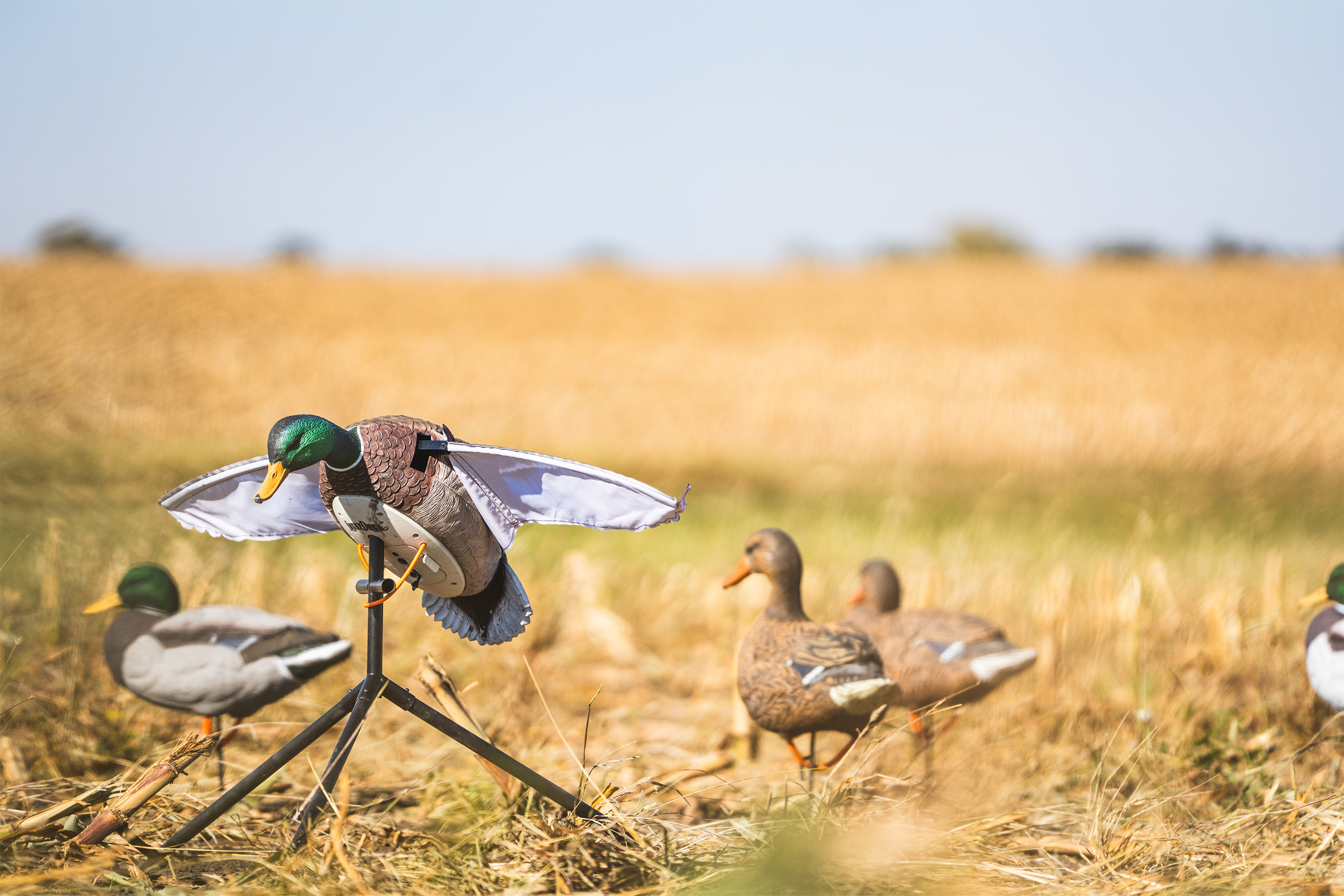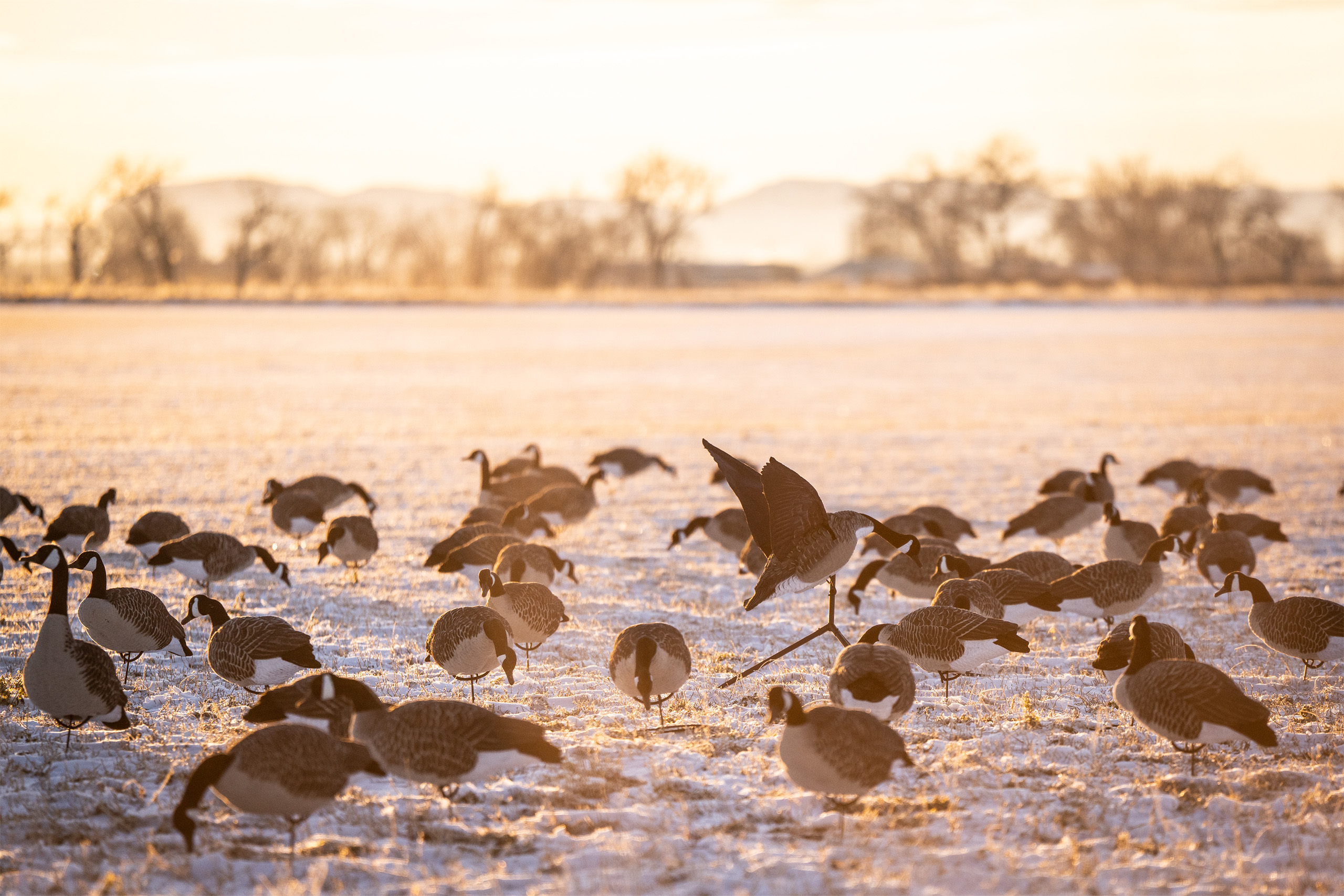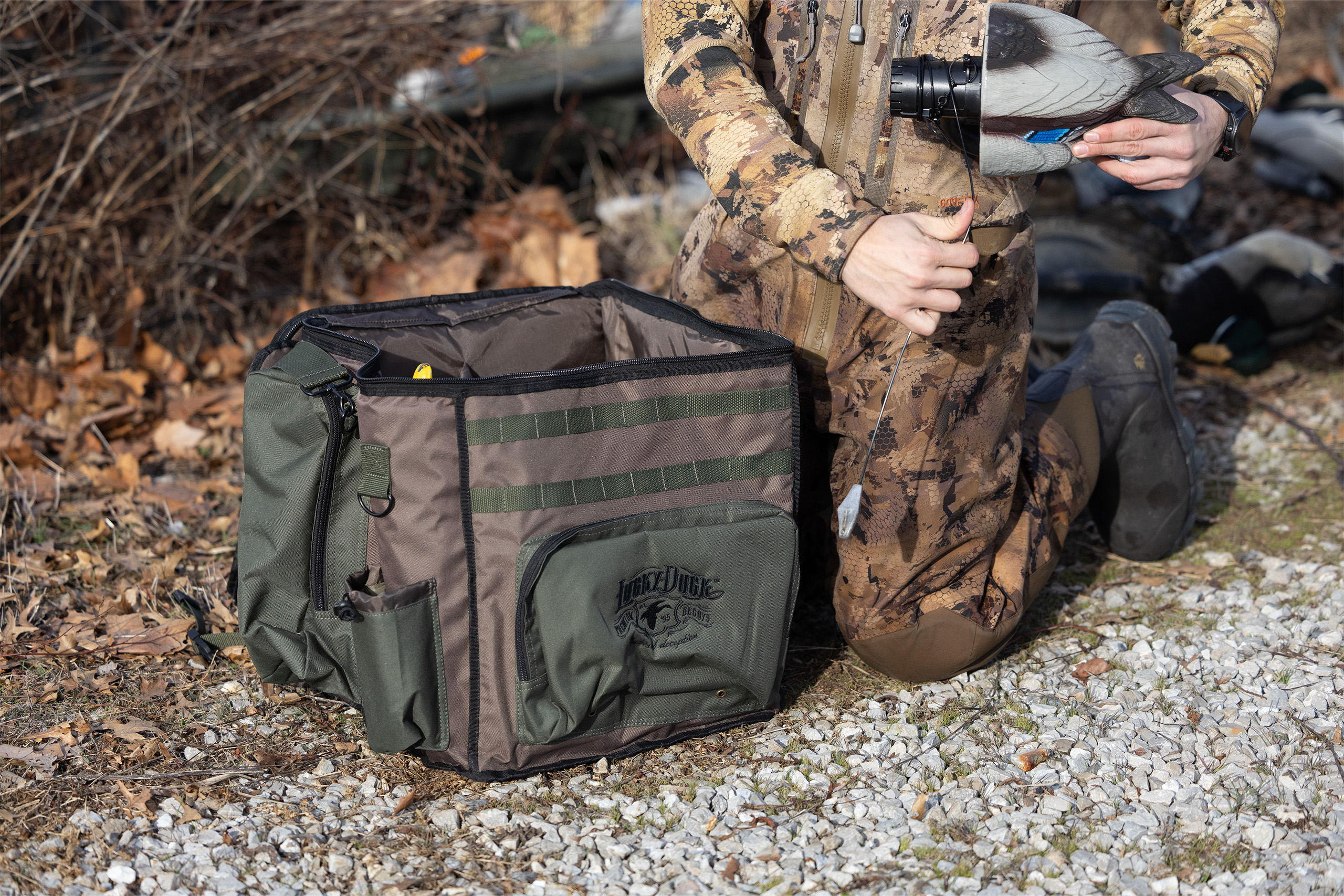Decoy Basics: How to Build Your First Waterfowl Spread
Posted by Lucky Duck Team on Nov 5th 2024
Building your first decoy spread can feel overwhelming, but it doesn’t have to be. The goal is to create a setup that mimics real waterfowl behavior and attracts birds to your location. The key to success lies in understanding how different decoys work together and how to place them strategically based on the conditions you’re hunting in. Whether you're hunting over water or in a field, selecting the right decoys and understanding basic placement techniques will give you the foundation you need to build an effective spread. The good news is that you don’t need to spend a fortune right away—though it’s safe to say the more the merrier, a well-thought-out small spread can be effective too.

Decoy Types: Floating, Field, and Motion Options
There are three main types of decoys to consider: floating, field, and motion decoys.
- Floating Decoys: These are essential for water-based hunts. They float on the surface, mimicking ducks or geese resting or feeding on water. They are typically anchored to prevent drifting and are perfect for marshes, ponds, and lakes.
- Field Decoys: If you're hunting in dry fields, such as grain or corn fields, field decoys are the go-to option. They can be full-bodied, silhouette, or even wind sock decoys that mimic birds feeding or resting on land.
- Motion Decoys: Adding movement to your spread can make a huge difference in catching the attention of passing birds. Motion decoys come in many forms and some work only on water while others can be added to your field spread—some are flappers, others mimic swimming, or are designed to add ripples to calm water. Lucky Duck’s top-tier quality motion decoys are powered by rechargeable batteries, while others may be powered by wind, or even a manually pulled jerk string to bring some motion to your setup.
Each of these decoy types serves a different purpose, and incorporating a mix of them into your spread will help create a more natural and appealing setup.
Choosing the Right Decoy Species for Your Hunt
When selecting decoys, it’s important to focus on the species of ducks or geese you’re targeting. A versatile choice for most hunters is to start with mallard decoys. Since mallards are the most common duck species in North America, other species like teal, gadwalls, and pintails are often comfortable landing near them. This makes mallard decoys an excellent, all-around option for puddle duck hunting.
If you’re hunting diving ducks, such as bluebills or canvasbacks, consider adding scaup (AKA bluebill) decoys to your spread. These species are accustomed to feeding together, and decoys that replicate them will naturally attract a range of diving ducks.
For those who hunt geese or ducks, Canada goose decoys can be highly effective, especially in field settings. Ducks are known to associate the larger and stronger geese with safety, making them a versatile addition to your spread. As you build your decoy collection, you can gradually add more species-specific decoys to better mimic the bird population you're hunting.

How Many Do You Really Need?
When you’re just starting out, you don’t need a massive spread to be successful. More importantly, your bank account probably can’t handle it. In fact, you can get away with as few as two to three dozen decoys for early-season puddle duck hunts. For many hunters, a small spread of 12 to 24 decoys—especially mallards—can be effective, particularly in smaller wetlands or potholes where space is limited.
If you're hunting in larger bodies of water or fields, you might want to increase your spread to three to four dozen decoys. The key is to ensure your decoys are well-placed to funnel birds into a landing zone. Adding even one high-quality motion decoy can greatly enhance the attractiveness of your spread. Over time, you can gradually expand your collection and add decoys that fit your specific hunting environment and target species.
Motion Decoys: Adding Realism to Your Spread
Motion decoys are absolutely one of the most effective ways to bring your spread to life, especially on calm days when still decoys might look unnaturally lifeless. Motion decoys simulate the movements of real ducks or geese, whether it's a spinning-wing or flapping decoy mimicking flapping wings or a swimmer decoy creating ripples on the water. Adding even just one motion decoy, like a Lucky HD, can help catch the attention of birds flying overhead, drawing them in from a distance.
On windless days, consider using decoys with splash or movement to create ripples and simulate feeding activity. Motion decoys can be powered by batteries, wind, or not powered at all with a jerk string setup that lets you manually move several decoys attached together in a line. Early in the season, birds may respond strongly to spinning-wing decoys, while later in the season, subtler movements may be more effective as ducks become more cautious.
Decoy Placement Strategies: Creating Effective Spreads
How you arrange your decoys can make or break your hunt. Ducks and geese are naturally cautious when landing, so creating an inviting and realistic spread is crucial. One of the most popular, tried-and-true strategies is to place your decoys in a U-shaped or J-hook configuration, leaving an open landing zone in the middle. Position the open side of the U downwind; if there is a steady wind, birds will naturally want to land into the wind and in the safety of the spread's center. For larger areas or field hunting, an X-pattern is another effective setup, especially when birds are approaching from multiple directions.
Adjust your decoy spread based on the weather and bird behavior. On calm days especially, use motion decoys to break up the stillness. In windy conditions, spread your decoys out more, creating pockets for birds to land in safely. The goal is to funnel the birds into a predictable landing zone that puts them within range of your shot.
Budget-Friendly Tips for Building Your Decoy Collection
Building a solid decoy collection doesn’t have to break the bank. Start small with versatile decoys, like mallards, which can attract a wide variety of species. As you continue to hunt each season, you can gradually expand your collection and start to include more species-specific decoys.
One way to save money is by buying used decoys from online hunting groups, garage sales if you are fortunate enough to find any, or auctions. We do not recommend this strategy of buying used with motion decoys as the previous owner may have broken or not maintained the decoy. With a little cleaning and touch-up paint, secondhand decoys can sometimes be rehabilitated. You can also build your collection over time, adding a dozen decoys or so each season as you find sales or deals.
Another cost-effective option is to mix full-body decoys with silhouette or wind sock decoys in your spread. These lighter and often cheaper decoys can help bulk up your spread on a budget.

Storage and Transportation: Keeping Your Decoys in Top Shape
Once you’ve invested in your decoys, it’s important to take care of them to ensure they last season after season. For transportation, simple mesh bags work well for hauling a large number of decoys and allow them to dry quickly after use. Slotted bags offer more protection for motion decoys or decoys with flocked heads or paint that can easily wear off.
If you’re hiking into remote locations, using a decoy sled or a game cart can make carrying your decoys and gear much easier. For long-term storage, make sure your decoys are clean and dry before packing them away. Storing them in a cool, dry place will prevent mold and keep the paint from cracking. Hanging decoys or stacking them in slotted bags can keep them organized and ready for the next season.
Set Yourself Up for Success This Season
Building an effective decoy spread doesn’t have to be complicated or expensive. By understanding decoy types, placement strategies, and adapting your spread as the season progresses, you can create a setup that consistently attracts birds. Whether you’re just starting out or looking to refine your tactics, keeping these basics in mind will help improve your chances in the field.
Ready to build your spread? Check out Lucky Duck’s lineup of versatile, high-quality decoys and accessories to enhance your waterfowl hunting experience this season. Start planning your hunt today and give yourself the best shot at success!
